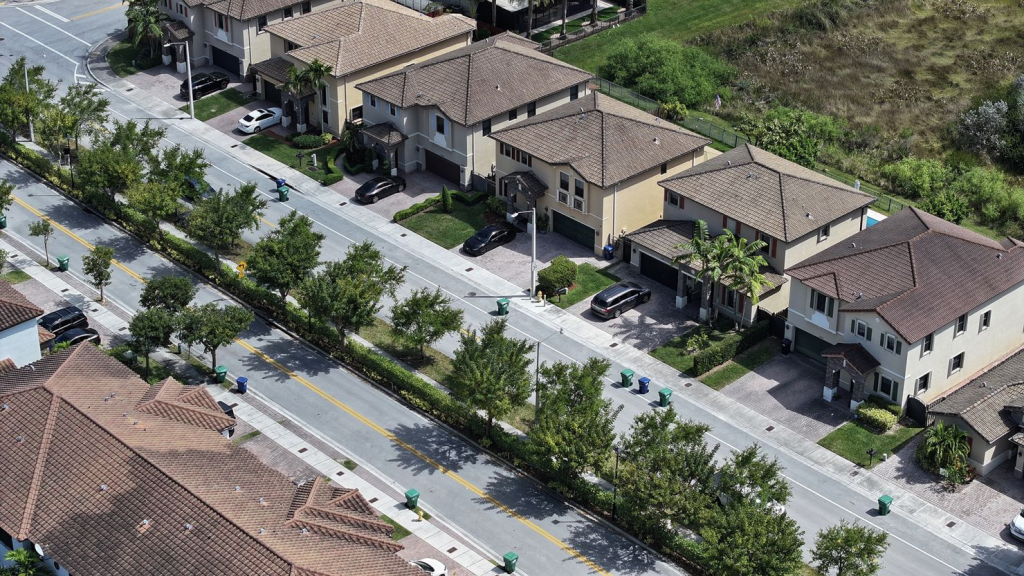The real estate market is changing rapidly. Emerging residential markets are becoming highly valuable. Investors, homebuyers, and industry professionals seek new opportunities. The market is now shifting away from traditional centers. Many people are looking for affordability and quality of life. We see strong job growth and vibrant community development in these areas. It provides detailed insights and data. The information is integrated and flows naturally. It uses clear language and simple sentences to ensure clarity. In addition, this article connects economic fundamentals with current trends. You will also learn how to capitalize on these opportunities.
Emerging residential markets are areas with untapped potential. They offer low entry prices and favorable growth prospects. Many investors seek regions with affordable prices and rising incomes. The markets are usually characterized by steady population growth and job creation. Local governments invest in essential infrastructure. New technology and a shift toward remote work boost these areas. In many cases, these markets have hidden cultural and community assets. They also offer opportunities for first-time buyers and seasoned investors. In emerging markets, the properties are often undervalued compared to traditional centers. Investors who enter early may secure excellent returns. The opportunities exist because of strategic economic shifts and technological advancements.
Buffalo, New York

Buffalo is a city undergoing transformation. It has a rich industrial history that is now evolving. The city is receiving new investments. Affordable housing attracts first-time buyers. Local authorities are investing in urban renewal projects. The downtown area is being revitalized with modern amenities. New businesses are opening, and cultural events are flourishing. Buffalo benefits from a strong job market and economic diversification. The city hosts start-ups and innovative companies. Moreover, new transportation projects enhance connectivity. The waterfront redevelopment is a prime example of public and private collaboration. Buffalo is becoming a hub for artistic and culinary innovation. Investors find opportunities in both residential and mixed-use developments.
The overall cost of living is lower than in many other northeast cities. A growing community of young professionals has moved in. City leaders encourage entrepreneurship and innovation. They offer incentives that boost local economic growth. Buffalo has seen a surge in home sales and property appreciation. Modernized infrastructure and enhanced public spaces add to its charm. The natural beauty of the lake and parks creates a balanced lifestyle. This combination of factors makes Buffalo an attractive market. It is a city of renewal and promise, and its rising profile is drawing attention.
Indianapolis, Indiana

Indianapolis is the capital of Indiana and a hidden gem. The city is known for its affordable housing market. It has a diverse economic base that supports sustainable growth. Many large corporations and start-ups call Indianapolis home. The region offers strong job growth and rising incomes. This balance makes the city attractive to both buyers and investors. Quality of life is another key factor in the city’s appeal. There are many parks, cultural venues, and sports facilities. Public transportation projects are improving urban mobility. Indianapolis is also known for its excellent educational institutions. The city consistently attracts young families and professionals.
Local authorities emphasize modern community development. New residential areas are emerging in revitalized neighborhoods. Affordable property prices and moderate rent levels contribute to high rental yields. The local government offers tax incentives and business-friendly policies. These measures have spurred real estate innovation and investment. As the city transforms, older areas are being upgraded. Neighborhoods are increasingly vibrant, modern, and safe. The overall housing demand is boosted by population growth. Investors find attractive opportunities in residential flips and long-term rentals. Indianapolis remains a steady and promising market for growth.
Charlotte, North Carolina

Charlotte is a bustling city in the southern United States. It has long been recognized as a financial hub. The city is experiencing additional residential growth. Job growth is strong in Charlotte. The financial services sector is expanding, and new industries are emerging. More young professionals are moving into the city. Affordable housing continues to draw first-time buyers. The quality of life is high and community amenities flourish. The city benefits from modern infrastructure and urban renewal initiatives. Public transportation improvements increase accessibility.
There are significant investments in local education and healthcare. These factors contribute to a balanced urban lifestyle. Developers build mixed-use projects that blend commercial and residential spaces. The design emphasizes community spaces and recreational areas. Affordable entry points remain despite rapid population increases. The city’s growth is enhanced by supportive local policies. Investors view Charlotte as an opportunity for substantial long-term gains. With a growing economy and urban renewal efforts, Charlotte is set to continue its rise. Economic diversification and quality living conditions attract new residents continually. All these aspects make Charlotte a market to watch.
Phoenix, Arizona

Phoenix is a dynamic city in the desert. It is known for its sunny climate and rapid growth. The city’s population has grown steadily over the past years. Affordable housing is a key asset. Phoenix attracts families and young professionals alike. The economy is buoyed by technology, healthcare, and renewable energy. This mix creates job opportunities and boosts income levels. Additionally, urban development projects enhance the city’s appeal. Transit projects and modern public spaces are emerging. The city offers a balanced lifestyle with indoor and outdoor attractions. Cultural diversity and vibrant arts add to its charm. Many new residential projects are underway across the region.
Investors see Phoenix as a lucrative market for both rental income and capital gains. The overall cost of living remains lower than in coastal cities. The efficient urban planning and community design support sustainable growth. Phoenix has become a nexus for innovation and quality living. It combines affordability with an excellent quality of life. This combination drives market demand and increases property values. Phoenix is well-positioned for long-term residential market growth.
Dallas-Fort Worth, Texas

Dallas-Fort Worth is a vast and dynamic metroplex. It stands as one of the fastest-growing regions in the country. Economic strength is evident in multiple industry sectors. There is strong demand for both rental properties and homes for purchase. Job opportunities are robust, and population growth is rapid. The region attracts businesses from across the nation. Affordable and upscale housing options exist in equal measure. Urban development and infrastructure projects are transforming the area. New roads, public transit, and commercial hubs are emerging quickly.
The region’s growth is driven by migration from high-cost coastal cities. Economic diversification, in sectors such as technology and finance, fuels further expansion. The climate is favorable, and the quality of life is high. Local policies support business expansion and residential development. Investors find strong rental yields and potential for appreciation. The Dallas-Fort Worth market offers diversified opportunities. This mix of affordability, quality of life, and growth potential makes the region very attractive. Both single-family and multifamily properties offer high returns. Consequently, the area is one of the best markets in the United States.
Investment Strategies for Emerging Markets
When investing in these emerging residential markets, careful planning is crucial. Investors must conduct thorough research using reliable data sources. This information provides trends and forecasts that guide investment decisions. Many investors focus on areas with strong population and job growth. Affordability is also a major driver in these markets. Investors often look for undervalued properties that have growth potential. It is useful to analyze local demographic data and economic conditions. Diversification is vital for risk management. Investors can build a portfolio across various regions. This strategy reduces exposure to any single market risk.
In emerging markets, property renovations can add value. Renovation projects allow investors to increase rental yields and resale value. Local networking with real estate agents provides on-the-ground insights. Collaborating with property management companies enhances operational efficiency. Many investors also use digital tools and PropTech platforms to monitor market activity. Efficient due diligence is essential for success. Through careful analysis, investors can identify quality opportunities. In emerging markets, timing is critical. Quick, decisive actions often capture the best deals. It is important to secure pre-approved financing to act swiftly when opportunities arise. Therefore, a strategic and diversified approach is vital for capitalizing on these emerging markets.
Challenges and Considerations in Emerging Markets
Even though emerging markets hold promise, they come with challenges. Market volatility is one risk investors face. Emerging markets can see rapid price fluctuations. Short-term corrections may occur even in strong markets. Investors should prepare for these ups and downs. Economic risks such as rising interest rates can affect property values. Moreover, changes in employment patterns might slow market growth. Regulatory changes or zoning laws may also impact market dynamics. In some cases, infrastructure projects do not meet planned schedules.
This delay can hinder market growth temporarily. Another challenge is the competition among buyers in fast-growing markets. High demand may lead to bidding wars and inflated prices. In addition, emerging markets sometimes lack mature market data. This makes forecasting more uncertain. Investors must rely on robust due diligence and diverse data sources. It is critical to understand local conditions and trends. These risks should be weighed against the potential rewards. Investors who are patient and well-informed can manage these challenges. In summary, while emerging markets offer significant upside, they require careful management of risk and uncertainty.
Connecting Economic Fundamentals and Market Trends
Economic fundamentals drive the growth in emerging residential markets. Job growth, income levels, and population increases are key drivers. Affordable housing also plays a critical role in this connection. Community investments in infrastructure boost market confidence. These projects signal long-term stability and development. In many cases, regional governments offer incentives. These incentives might include tax breaks or financing options. Such support encourages both developers and buyers. These markets benefit from a mix of public and private investment. Additionally, trends like remote work encourage migration from expensive urban centers.
Workers can relocate to areas that offer better affordability and quality of life. This shift further increases demand in emerging markets. Economic data shows that rising incomes and stable employment boost housing demand. Demographic data supports these trends. Many emerging markets report strong population growth rates. This growth is often driven by millennials and other young professionals. For example, cities like Charlotte and Phoenix continue to attract newcomers. Their dynamic economies and moderate property prices offer a balanced environment. In this way, strong economic fundamentals and prevailing market trends reinforce each other. Consequently, this convergence supports long-term growth and investment potential.
Community and Lifestyle Benefits
The quality of life in emerging markets is a significant factor for buyers. These markets offer community, affordable amenities, and a slower pace of life. In cities like Buffalo and Indianapolis, local culture and recreation are highly valued. Green spaces, local eateries, and public art enrich community life. Social connection is important for residents. Emerging residential markets create strong, supportive communities. Affordable housing means families can own homes with less financial strain. In many cases, quality education and healthcare services are improving.
Infrastructure investments are vital to the success of emerging residential markets. New roads, public transit projects, and upgraded public facilities play a central role. Infrastructure improvements directly influence property values and market demand. They attract both businesses and residents. When cities invest in transportation and community facilities, growth is more sustainable. Improved transit systems reduce commute times and enhance connectivity.
Such investments signal long-term commitment by local authorities. In cities like Charlotte and Dallas-Fort Worth, infrastructure projects have changed market dynamics. New highways and transit expansions open up previously isolated neighborhoods. Investment in digital infrastructure, such as broadband and smart city technology, is also rising. Digital connectivity is crucial in today’s remote working world. Therefore, modern infrastructure is fundamental to healthy market growth. These developments also contribute to overall community quality. When people have access to reliable services, they are more likely to settle long term. Consequently, strong infrastructure is a cornerstone for thriving residential markets.
Demographic Shifts and Population Growth
Demographic changes are a major force behind emerging residential markets. Many urban centers face population declines, while smaller markets see rapid growth. Migration trends show that younger populations seek affordable living. Professionals are eager to escape high-cost metropolitan areas. They are drawn to cities with strong job prospects and modern amenities. These demographic shifts are supported by improvements in education and healthcare. In many emerging markets, the median age is lower than in older urban centers.
This trend boosts long-term housing demand. Many areas now attract millennials who value both affordability and quality of life. Additionally, migration from larger cities increases demand in regions with lower cost of living. This influx creates diverse communities that contribute to economic dynamism. Population growth often results in a surge in home sales and new developments. When more people move into an area, local businesses prosper. As a result, the overall residential market becomes more vibrant. Demographic trends thus serve as a key indicator for potential growth in these areas.
Economic Incentives and Policy Support
Local governments play a crucial role in supporting emerging residential markets. Policy incentives can attract both investors and residents. Tax incentives and relaxed zoning laws foster new developments. Authorities offer streamlined permits and financial support for home builders. Such measures encourage private investment and boost economic activity. In cities like Indianapolis and Charlotte, local policies have generated substantial growth. These incentives help lower the cost of entry into the market.
They also provide stability and confidence for long-term investment. Government initiatives often focus on affordable housing programs. These programs help families purchase homes at lower costs. In addition, they bolster community development and urban renewal. Public-private partnerships can further enhance market performance. Policies that support infrastructure and technological advancements also drive growth. Overall, government support is a significant advantage in emerging markets. It makes investment decisions more attractive and reduces overall risk.
Sustainable Development and Green Initiatives
Sustainability is a growing focus in emerging residential markets. Communities are emphasizing green development and eco-friendly practices. Sustainable buildings offer energy efficiency and lower operational costs. These factors are attractive to modern homebuyers and investors. Many local governments provide incentives for green construction. Such measures include tax credits and grants for energy-efficient upgrades. Developers increasingly incorporate sustainable designs into new projects. Renewable energy sources, modern insulation, and green roofing are becoming common.
These features not only reduce carbon footprints but also enhance long-term property values. Sustainable infrastructure supports resilient and thriving communities. Environmental consciousness is gaining traction among younger generations. They demand quality living environments with a minimal ecological impact. In emerging markets, sustainable practices lead to higher market appeal. Investors often consider eco-friendly properties as a hedge against future regulatory changes. In summary, integrating green initiatives adds value and builds community trust. This trend aligns with global efforts to combat climate change.
The Impact of Remote Work on Residential Demand
Remote work has altered traditional residential trends significantly. Many professionals are no longer tied to city centers for employment. They now seek homes that offer a better quality of life. Remote work provides flexibility and reduces the need for long commutes. Workers can choose locations based on lifestyle and affordability. Emerging residential markets benefit from this shift because they offer lower costs.
As a result, these areas see increased housing demand. Employers also support remote work policies that encourage geographic flexibility. This trend allows companies to access talent from a broader region. Therefore, markets like Phoenix and Dallas-Fort Worth receive a steady influx of new residents. The flexibility afforded by remote work continues to drive demand in these markets. It also offers long-term growth potential for residential real estate. Both investors and homebuyers are capitalizing on this trend. In many ways, remote work is a key driver for emerging market growth.
Long-term growth is a central promise of emerging residential markets. These markets offer the chance for capital appreciation over time. Market resilience is built on strong fundamentals such as job growth and population expansion. The integrated community investments support sustainable progress. Investors should view these markets as a long-term opportunity. Even if short-term corrections occur, the overall trend remains upward. Historical data shows that early investments in emerging markets yield high returns. The risk is balanced by significant potential gains. Moreover, these markets often recover faster from economic downturns. Strong economic fundamentals provide a cushion in volatile times. The resilience of these areas results from diversified economies and supportive policies. Investors with a long-term outlook tend to benefit the most. It is important to remain patient and well-informed. Over time, the cumulative benefits of growth and appreciation can be substantial.
Integrated Market Analysis and Forecasts
Market forecasts for these emerging areas are optimistic. Economists point to robust population growth and sustainable job creation. Economic models show that affordability remains a strong catalyst. Furthermore, urban renewal and infrastructure investment support future growth. Forecasts predict steady price increases and rising rental yields. Such projections provide a clear roadmap for investors. They indicate a positive long-term trend despite short-term fluctuations. Integrated analysis of economic, demographic, and policy factors reinforces the investment case.
Several factors and connectors work together to drive success in emerging residential markets. Job growth connects to increased housing demand. Population influx connects to rising property values. Infrastructure investments connect to improved quality of life. Government incentives connect to successful urban renewal. Technological advancements connect to market transparency. These elements work in tandem to create robust growth. The cumulative effect of these connections fuels long-term market strength. Investors benefit when they understand how these connectors interact.
Investors can adopt several strategies to gain from emerging residential markets. First, they should conduct detailed market research. They must examine local economic data and demographic trends. Second, diversification is essential to mitigate risk. Investing in different regions and property types is wise. Third, local expert advice is invaluable. Engaging with local agents and property managers provides crucial insights. Fourth, use innovative technologies to monitor market trends. Digital tools and PropTech platforms can enhance decision making. Lastly, a long-term investment approach is recommended. Patience and steady monitoring are key to success. Successful investments come from a balanced strategy that incorporates these elements.
Building a Diversified Investment Portfolio
A diversified portfolio is crucial in reducing risk. Investors should spread their investments across different emerging markets. This approach reduces dependency on any single market. Diversification involves acquiring properties in various cities. It also means investing in different property types. For example, single-family homes, multifamily units, and mixed-use properties each offer unique benefits. A diverse portfolio balances volatility and captures growth potential. Investors can maximize returns by combining long-term investments and renovation projects. This strategy supports stable income streams and strong capital appreciation. The result is a resilient and effective investment portfolio.
Financial planning is a core aspect of real estate investment. Investors must budget carefully and secure reliable financing. Pre-approved loans allow for swift action when opportunities arise. Risk management strategies are equally important. Diversification and thorough due diligence help reduce potential losses. Investors should set aside a contingency fund for unexpected events. Regularly updating financial plans ensures that investments remain on track. Risk management is an ongoing process that involves constant monitoring. Investors should review market conditions frequently. Adjusting strategies in response to new data minimizes risks. A proactive approach to financial planning enhances stability in emerging markets.
Local partnerships are vital when investing in emerging markets. Networking with local experts, such as real estate agents and property managers, provides valuable insights. These professionals have deep knowledge of neighborhood trends. They can help identify undervalued properties and emerging hotspots. Local partnerships often lead to better deals and lower transaction costs. They also provide guidance through local regulations. Building trust with community leaders improves market access. Effective partnerships are based on clear communication and mutual benefit. Investors who foster strong local ties tend to succeed. These connections often reveal opportunities that are not apparent from afar. Local expertise is a powerful tool in capitalizing on market trends.
Maintaining Agility in a Dynamic Market
Emerging markets are dynamic and require agility. Investors must be ready to adjust their strategies quickly. The market can shift due to changes in economic indicators or policy. Flexibility is key to managing unexpected fluctuations. Successful investors monitor market trends continuously. They adjust investment strategies based on new data. Agility allows for rapid response to price corrections and increased competition. This approach ensures that investments remain profitable over time. An agile strategy can help investors capture value during market cycles. By staying nimble, investors can exploit short-term opportunities while holding for long-term gains.
Renovation projects are common in emerging markets. Investors can purchase undervalued properties and improve them. Renovations can significantly boost property value. Value-add strategies often involve modernizing outdated homes. Upgraded properties attract higher rental yields and resale values. Renovation projects can also attract first-time buyers. They appreciate modern amenities in renovated homes. This strategy adds both short-term rental income and long-term appreciation potential. The key is to invest wisely in properties with growth potential. Careful budgeting and strategic planning are essential for successful renovations. Value-add strategies contribute to overall market success by increasing property quality and desirability.
Modern homebuyers value lifestyle and community. Emerging markets that offer a high quality of life attract strong demand. Many buyers prefer areas with walkable neighborhoods, good schools, and healthy recreation options. Lifestyle trends drive demand in cities with vibrant community cultures. These features often translate into higher property values over time. Investors should consider the local lifestyle when selecting properties. Areas with excellent amenities and community services tend to perform well. Quality of life is a vital component in a successful residential market. Aligning investments with lifestyle trends enhances long-term stability and growth.
The Future Landscape of Residential Real Estate

Emerging markets represent the future of residential real estate. Trends such as remote work, digital innovation, and demographic shifts are reshaping the landscape. Future developments will likely focus on mixed-use communities and sustainable growth. This evolution is a natural response to changing consumer preferences and economic conditions. The long-term outlook for emerging markets remains positive. Investors who embrace these changes position themselves for sustained success. Markets will continue to evolve, and those who adapt will benefit. The future landscape promises dynamic growth and enhanced living conditions. By staying informed and flexible, investors can navigate this evolving market landscape.
Timing is crucial when investing in emerging residential markets. Entering at the right time can maximize returns. Careful analysis of market trends helps determine optimal entry points. Pre-approved financing ensures that investors can act swiftly. Monitoring local economic indicators provides early signals of growth. Many successful investors enter emerging markets when prices are still low. Early entry often results in substantial long-term gains. Investors should also plan exit strategies to capture value at the right time. Market timing, coupled with thorough research, is essential for success. Therefore, a disciplined approach to market entry is required.
Professional advisors play an important role in emerging market investments. Financial and real estate advisors provide valuable insights and guidance. They help investors interpret market data and trends. Trusted advisors also help manage risks effectively. They can suggest diversification strategies and innovative investment techniques. Experienced professionals enhance decision-making with local expertise. An advisor’s network often provides access to off-market deals. This connection can secure advantageous investments. Relying on professional advice is a key component of a successful strategy. Advisors contribute to building a robust and resilient investment portfolio.
Evaluating Local Market Conditions Together
Local market conditions must be evaluated holistically. Economic performance, population trends, and government policies work together. They create an overall investment picture. Investors should examine all these factors simultaneously. This integrated approach ensures better decision-making. Local market evaluations reveal underlying strengths. They indicate where hidden opportunities lie. Taking an integrated approach minimizes potential risks. When all elements align, the investment is more secure. Analyzing conditions together provides a clearer outlook on market potential.
Global capital flows influence local emerging markets significantly. International investors seek opportunities in regions with high growth potential. These inflows boost property values and spur development. Global capital can also stabilize local markets during downturns. When international investors participate, markets gain credibility. The presence of foreign capital often attracts additional local investment. This interconnectedness enhances market resilience and growth prospects. Investors from around the world contribute to a dynamic investment climate. Therefore, emerging markets benefit from a global perspective. The synergy between local markets and global capital is a powerful growth catalyst.
A long-term investment roadmap is essential for sustained success in emerging markets. Investors should set clear goals and timelines. The roadmap should integrate various strategies and risk management practices. Long-term planning provides direction and clarity. Investors must be patient and adapt to market changes. Regular reviews of performance and strategy are recommended. A well-crafted roadmap serves as a guide through fluctuating market cycles. It ensures that investments remain aligned with financial goals. In summary, long-term planning is a cornerstone of profitable investment.
Conclusion
The top 5 emerging residential markets to watch are Buffalo, Indianapolis, Charlotte, Phoenix, and Dallas-Fort Worth. Each market has its unique advantages and challenges. They all offer affordable entry, strong job growth, and community benefits. Investors and homebuyers alike stand to gain from early entry. A comprehensive strategy that includes detailed research, local partnerships, and disciplined risk management is key. Emerging markets offer both financial and social rewards. Long-term growth potential is significant despite occasional fluctuations. By staying agile and proactive, investors can capture substantial gains. In today’s dynamic real estate landscape, these markets represent the future.
The journey through these emerging markets shows that great opportunities exist when vision meets strategy. Each market provides a unique combination of affordability, quality of life, and future growth. By understanding these elements, investors can build a resilient and diversified portfolio. Whether you are a first-time homebuyer or a seasoned investor, the insights provided here serve as a valuable guide. Use trusted data sources, build local connections, and plan for the long term.
In conclusion, the future of residential real estate is in these dynamic, emerging markets. Buffalo, Indianapolis, Charlotte, Phoenix, and Dallas-Fort Worth each provide distinct advantages. They are characterized by affordability, robust economic conditions, and strong community development. Investors who recognize these opportunities early can secure substantial long-term gains. With integrated approaches and disciplined risk management, these markets promise sustainable growth. The momentum in these areas is driven by shifting demographics and technological innovation. Future trends, such as remote work and sustainable urban design, ensure that these markets will remain vital. The transformation is already underway, and proactive investors are reaping the rewards.



